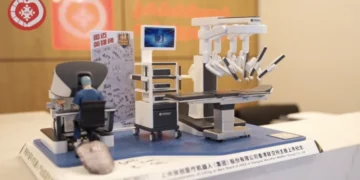Bladder cancer is a malignant tumor that develops from the wall of the bladder.
Cancer of bladder in most cases is superficial, that is, it does not go beyond the mucous membrane. However, malignant formation can cover the entire wall of the bladder and metastasize. For example, in the liver, lungs, bone tissue.
Cases of cancer that germinate in the muscle layer make up 20-25% of malignant formations of the urinary bladder. Recurrence of bladder cancer occurs quite often. Therefore, patients need regular check-ups and control throughout their lives.
Risk factors
The risk of bladder cancer and other oncological pathologies increases with age. В группу риска include mainly those persons who are exposed to chemical substances due to their professional activity. Also smokers. It turns out that tobacco users develop bladder cancer 6 times more often than non-smokers. Cancer of bladder is more common in men than in women. Mostly at the age of 45-65 years. Specialists refer to those who often suffer from cystitis in the risk group. Who often has inflammation of the mucous membrane of the bladder. Hereditary predisposition has less significance in the development of this pathology.
How is bladder cancer diagnosed?
A typical symptom of bladder cancer is blood in the urine and pain during urination. If the tumor prevents the outflow of urine from the kidneys into the urinary bladder, kidney dysfunction may develop. The latter, in turn, manifests as pain in the kidney area. There are known cases when the tumor that developed in the bladder blocks the urethra. Accordingly, it creates an obstacle to the process of urination, which causes difficulty and pain when urinating. Naturally, the presence of blood in the urine does not always mean the presence of a malignant process. Appropriate tests are used for diagnosis.
What is the diagnosis based on?
When you suspect cancer of bladder, urine analysis is conducted. Confirm the presence of blood in her, as well as carry out a cytological examination of the urine. They belong to cystoscopy. As a rule, the patient undergoes urography (x-ray contrast examination of the urinary tract and urinary bladder) and ultrasound examination. CT-urography is also available to determine the exact location of the tumor and other details.
Treatment
The method of treatmant is determined by the exact diagnosis. Diagnosis, in turn, includes accurate determination of localization and degree of tumor spread. Correct classification of malignant tumor tissue. If the tumor is superficial and has not grown into the muscle layer, transurethral resection of the urinary bladder is used.
During this operation, a special instrument is inserted into the urethra – a resectoscope, with the help of which the tumor is cut out of the bladder and the vessels are cauterized. If the disease affects the muscular layer, there is a risk of its wider spread. Performed a radical operation – total cystectomy. Complete excision of the bladder occurs, most often with the gland (prostate) present. After that, they relate to the creation of an intestinal reservoir and orthotopic diversion (transfer) of urine.
The famous surgeon Guram Karazanashvili conducts this complicated operation for bladder cancer at the highest level, using particularly complex techniques and methods. It was the video presentation of this operation that surprised oncologists from different countries around the world. Excited thousands of specialists at the congress of the American urological association. To the pride of Georgian medicine, he forever secured a place in the video library of the American Urological Association.











